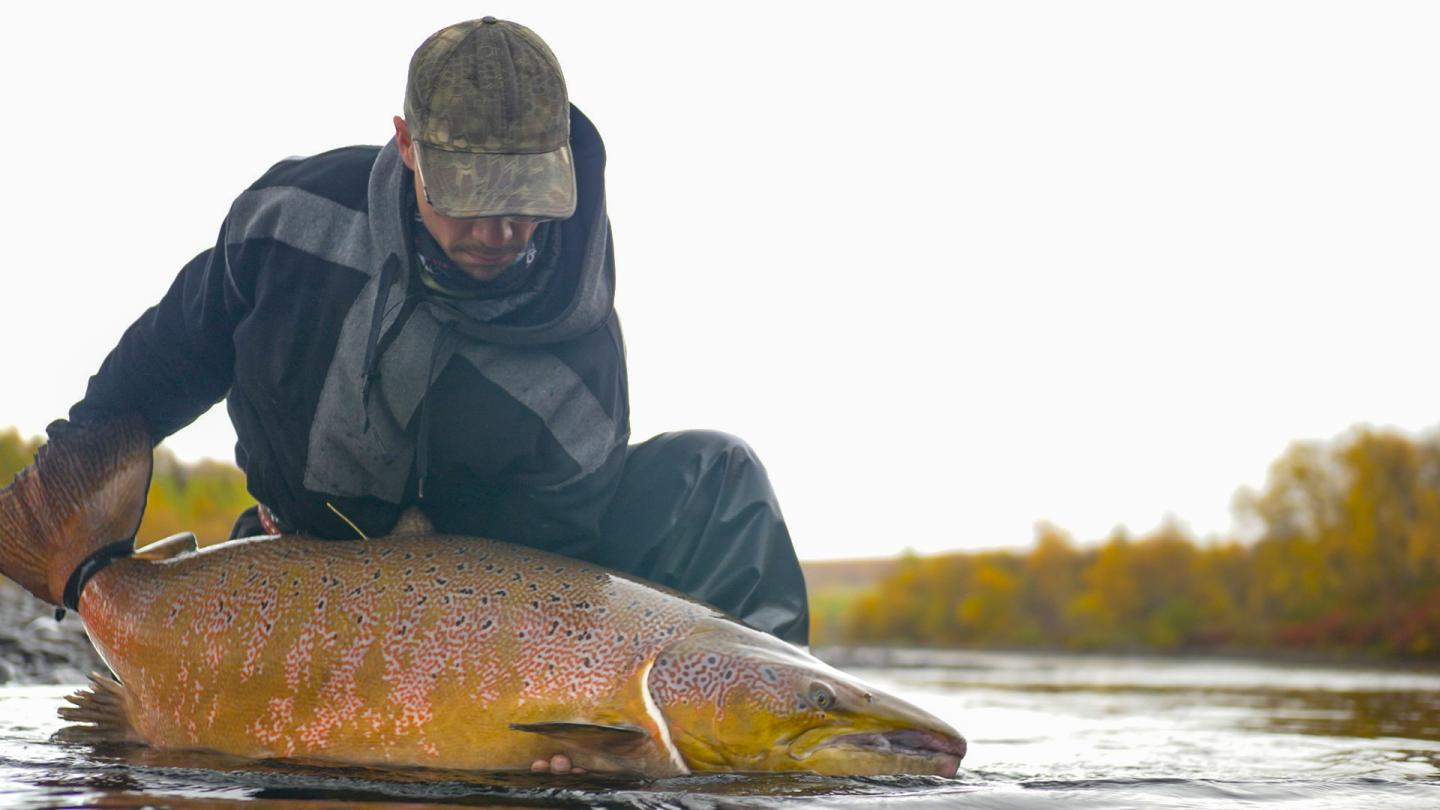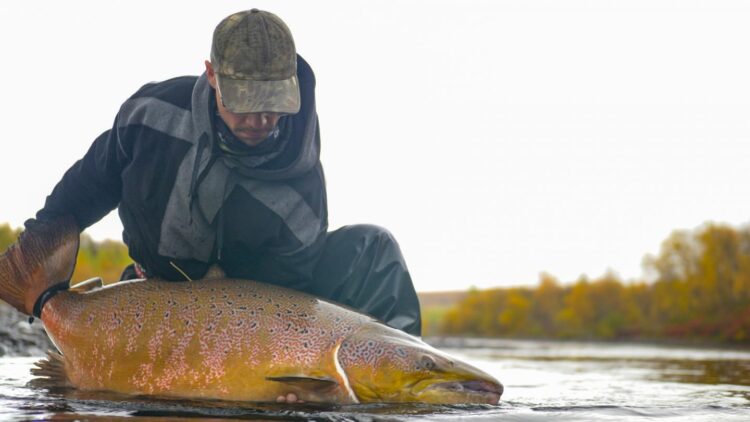
Credit: Mikko Ellmen
Every summer, tens of thousands of Atlantic salmon migrate from the Barents Sea to the Teno River, Finland, to spawn in the streams where they were born. This journey is a feat of endurance: salmon stop feeding and must navigate fast flowing water, leap over obstacles, and avoid predators, hooks, and fishing nets to arrive at their spawning grounds.
The marathon doesn’t stop there though: once they arrive at their spawning grounds, they must fight for the possibility to mate with members of the opposite sex. Who are the winners of this evolutionary competition? It turns out that the largest fish produce the most offspring, but there are far fewer of these fish on the spawning ground battling for reproductive success than their younger – and smaller – competitors, according to researchers at the University of Helsinki and the Natural Resources Institute Finland.
The study, recently published in the scientific journal Molecular Ecology, is part of a long-term monitoring program. A small piece of fin tissue was removed for genetic fingerprinting of more than 5000 adults and juveniles before they were released back into the wild. Adults were also fitted with a unique identification tag after a few scales were carefully sampled. The scales are particularly valuable, as they record annual growth cycles, much like tree rings.
“Great care was taken to not harm the fish,” explains Dr. Kenyon Mobley, lead author of the article. “In fact, we have recaptured adults returning to spawn several years later and juveniles returning to spawn as adults.”
Larger salmon have more offspring
Most salmon in Teno River spend between one and four years at sea before migrating back to breed. The more time salmon spend at sea, the larger they grow. Females generally take between 2-3 years to mature, but most males return after just one year at sea.
Mobley’s study showed that for every year spent at sea, females gain over 4 kilograms of body weight and produce 60% more offspring. Males, on the other hand, gain nearly 5 kilograms of body weight and produce 200% more offspring for every year they spend at sea.
However, spending more time at sea comes with a significant cost. Very few of these older larger fish return to spawn. “This is presumably because spending more time at sea exposes fish longer to predators, fishing, and diseases, and thus a higher risk of death before having a chance to spawn,” explains Mobley.
“Knowing the reproductive contributions of different sized fish in this river section can help us to develop more accurate models of offspring production. These are needed for developing Teno salmon management guidelines,” says Professor Jaakko Erkinaro from Natural Resources Institute Finland. “It also helps our ongoing research aimed at predicting how many large adults may survive at sea to return to spawn,” Mobley adds.
Larger salmon have more mating partners
Like most animals in nature, salmon are not monogamous and can have up to eight mating partners, the study shows. Having more mating partners ensures successful fertilization of eggs and passing on their genes to the next generation.
Nearly all females captured in the study produced offspring, mating on average with more than two males, and gained 35% more mates for each year they spent at sea. Males have, on average, less than one mate, indicating that many males are excluded from mating presumably through strong competition by bigger males. For each year spent at sea, males gain 60% more mates. This means that larger salmon, in particular males, have a distinct advantage when it comes to finding mates.
Where are the females?
In the study population, females are a rare commodity. There are up to seven males for every female at the spawning ground near the entrance of the Utsjoki River. This pattern is consistent across all years of the study. Having a high number of males likely increases fights among males for opportunities to mate with the few available females. Why so few females return to this particular site remains a mystery, as other locations in the Teno River have a more balanced mix of males and females.
Early life-history affects female reproduction
Prior to entering the sea, juvenile salmon usually spend between 3-5 years in freshwater. The researchers were surprised to find that the longer the females stay in freshwater, the fewer years they spend at sea, and return to spawn at a much smaller size. Because these females are smaller, they have fewer eggs and produce less offspring. Males, on the other hand, do not seem to be affected by spending more time in freshwater.
“These results show how overlooked aspects of salmon life-history are important to the long-term conservation of these fish,” said Mobley.
###
Media Contact
Kenyon Mobley
[email protected]
Original Source
https:/
Related Journal Article
http://dx.





